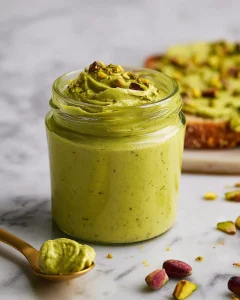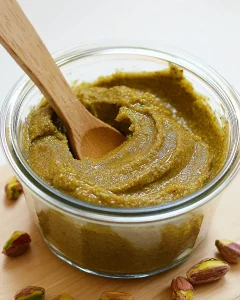Pistachio Cream vs Butter: Ultimate Guide
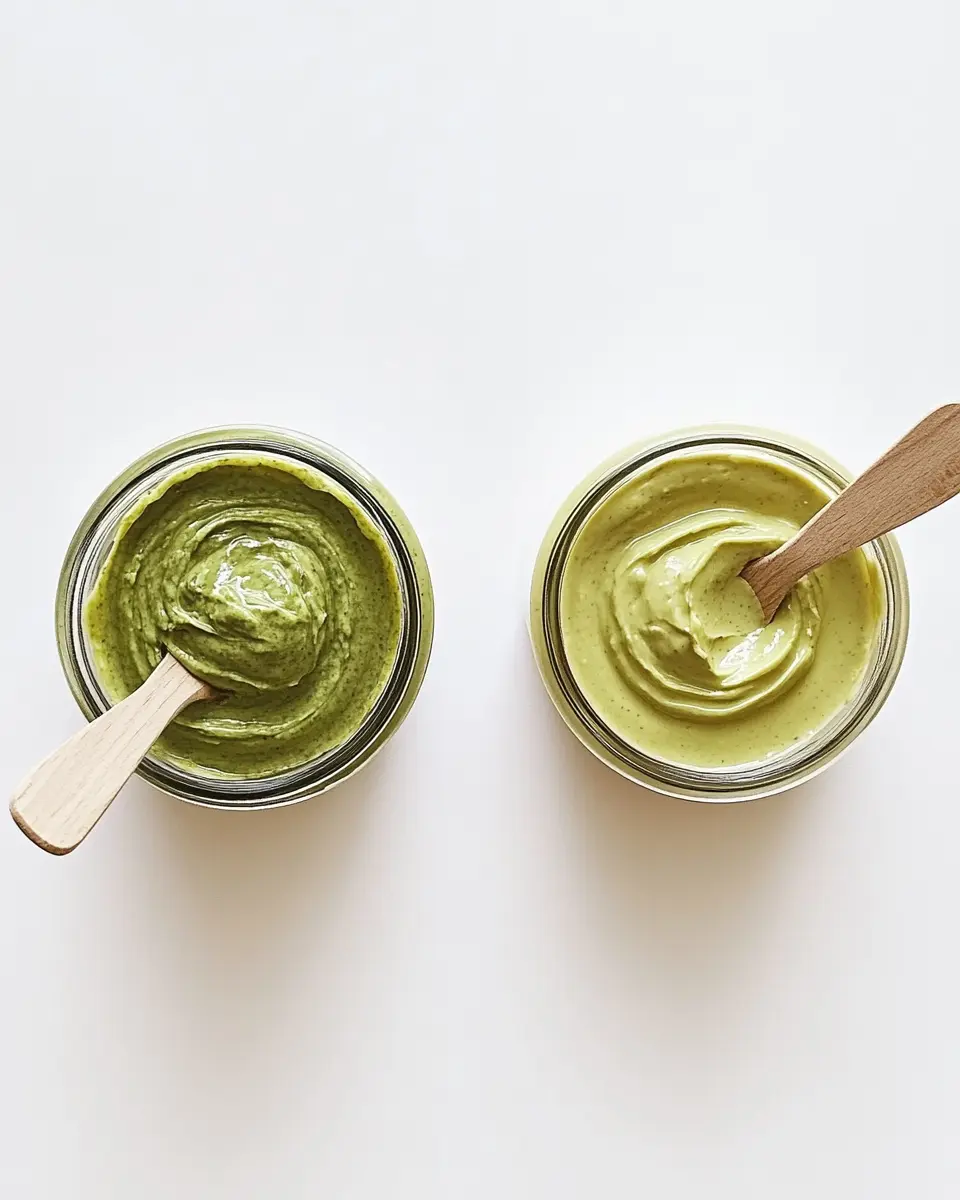
Pistachio Cream vs Butter: Amazing 5 Secrets Every Baker Needs
Pistachio cream vs butter comparison reveals surprising differences. Discover which works best for your recipes plus expert homemade tips.
Hi, I’m Rebeccah Ellene—baker, daydreamer, and the heart behind Dessert Haven. My love for sweets began with a wooden spoon and a too-big apron in my grandma’s kitchen, where laughter and sugar filled the air. Over the years, I’ve turned that spark into a space where anyone—from first-time bakers to seasoned pros—can find joy in the process.
Last summer, I stumbled upon a revelation that changed my baking forever. While testing recipes for my cookbook, I discovered something fascinating about pistachio cream vs pistachio butter. These two ingredients seem similar, yet they create completely different results in desserts.
After months of kitchen experiments and countless batches, I’ve unlocked the secrets that separate amateur attempts from professional-quality results. This guide shares everything I’ve learned about when to use each ingredient and how to make both at home.
While this guide focuses on the ultimate comparison between pistachio cream and butter, understanding how these products fit into the broader landscape of nut-based spreads can elevate your culinary expertise even further. For a comprehensive analysis that includes texture comparisons, nutritional breakdowns, and professional substitution techniques across all pistachio products, explore our complete Pistachio Cream vs Nut Butter guide. This pillar resource will transform how you approach every pistachio-based recipe in your kitchen.
Table of Contents
Understanding Pistachio Cream vs Pistachio Butter
The difference between pistachio cream and pistachio butter isn’t just semantic—it’s fundamental to your baking success. Moreover, choosing the wrong one can completely transform your recipe’s outcome.
Pistachio cream contains a higher oil content and smoother consistency. Additionally, it incorporates more easily into batters and frostings. The texture resembles heavy cream with nutty undertones. When properly made, it should drizzle from a spoon in a steady ribbon that eventually breaks into droplets.
This luxurious consistency comes from extended processing time and higher oil ratios. Furthermore, the increased fat content creates better emulsification with other ingredients. Think of how easily it blends into buttercream without creating lumps or separation.
Pistachio butter, conversely, maintains a thicker consistency similar to peanut butter. Furthermore, it provides more concentrated flavor but requires different handling techniques. The density makes it perfect for spread applications. However, this thickness also means it holds its shape better in applications like cookie centers or layered desserts.
The concentrated nature of pistachio butter delivers intense nutty flavor in smaller quantities. Therefore, you often need less pistachio butter than cream to achieve the same flavor impact. This efficiency makes it cost-effective for commercial baking operations.
The Science Behind Texture Differences
Understanding the molecular differences helps explain why these products behave so differently. Pistachio cream undergoes longer mechanical breakdown, releasing more oils from cell walls. Additionally, the extended processing creates smaller particle sizes, resulting in smoother mouthfeel.
Meanwhile, pistachio butter retains more structural integrity from the original nuts. Consequently, it maintains slight grittiness that many bakers actually prefer. This texture provides pleasant contrast in smooth desserts like panna cotta or mousse.
Key Differences at a Glance
| Feature | Pistachio Cream | Pistachio Butter |
|---|---|---|
| Consistency | Smooth, pourable | Thick, spreadable |
| Oil Content | 35-40% | 25-30% |
| Best Uses | Frostings, sauces | Spreads, fillings |
| Shelf Life | 2-3 weeks | 4-6 weeks |
| Processing Time | 8-10 minutes | 5-7 minutes |
Essential Ingredients for Homemade Success
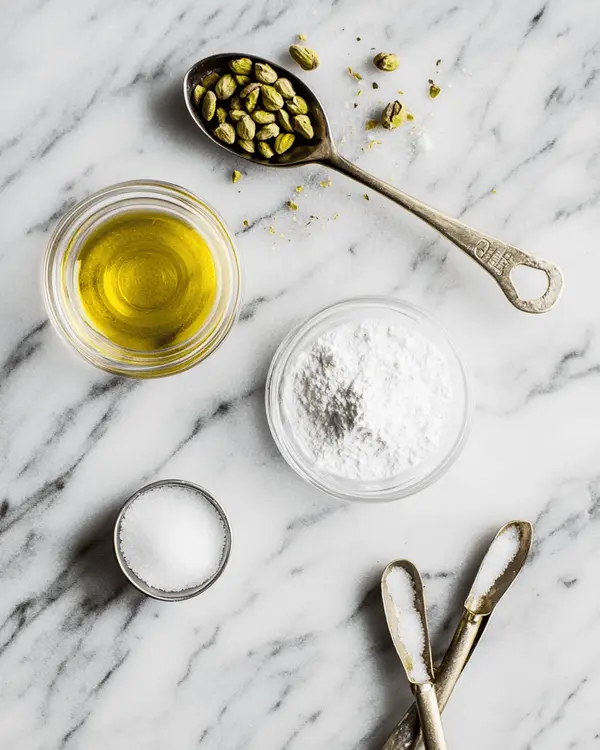
Creating either pistachio cream or homemade pistachio butter requires quality ingredients and proper technique. However, the ingredient ratios differ significantly between the two.
Core Ingredients
| Ingredient | Pistachio Cream | Pistachio Butter | Notes |
|---|---|---|---|
| Blanched pistachios | 2 cups (280g) | 2 cups (280g) | Must be completely dry |
| Neutral oil | 3-4 tbsp | 1-2 tbsp | Grapeseed works best |
| Salt | ¼ tsp | ¼ tsp | Enhances natural flavor |
| Sweetener (optional) | 1-2 tbsp | 1 tbsp | Powdered sugar recommended |
Shopping Tips for US Grocery Stores
First, always buy blanched pistachios from the baking aisle rather than the snack section. Specifically, snack pistachios often contain excess salt and oils that interfere with processing.
Look for bright green color without dark spots or yellowing. Additionally, fresh pistachios should smell sweet and nutty, never rancid or musty. The color intensity directly correlates with flavor strength—pale pistachios often lack the robust taste needed for quality spreads.
Quality indicators include firm texture when pressed and uniform size. Meanwhile, avoid packages with visible dust or broken pieces, as these indicate age or poor handling. Broken pieces often turn bitter during processing because their oils have oxidized.
Store brand vs premium considerations: While store brands work perfectly for basic recipes, premium pistachios from specialty suppliers often deliver superior results. However, the price difference rarely justifies the expense for everyday baking.
Seasonal availability matters significantly for pistachio quality. Fall harvest brings the freshest nuts to market, while spring inventory often shows signs of aging. Therefore, stock up during peak season if you bake frequently.
Bulk buying strategies can save money, but proper storage becomes crucial. Vacuum-sealed bags maintain freshness longer than standard packaging. Additionally, freezing extends shelf life up to 12 months without affecting processing quality.
International Substitutions for Global Readers
European bakers can substitute Mediterranean pistachios, though American recipes may require slight oil adjustments. Similarly, Middle Eastern varieties often contain higher oil content, reducing added oil requirements.
Canadian readers should look for California pistachios in specialty stores, as these match recipe expectations perfectly. However, Iranian pistachios work beautifully but may require technique modifications.
Australian and New Zealand bakers can source quality pistachios through specialty nut suppliers. Moreover, local macadamia nuts create interesting variations using identical techniques.
Bold Add-ins for Creative Variations
Transform your basic recipe with these exciting additions:
- Vanilla bean paste (½ teaspoon) for bakery-style sophistication
- Rose water (¼ teaspoon) for Middle Eastern flair
- White chocolate (2 ounces, melted) for dessert-level indulgence
- Coconut oil (1 tablespoon) for tropical notes
Advanced flavor combinations elevate homemade versions beyond commercial products. For instance, cardamom and orange zest create Persian-inspired sophistication. Meanwhile, espresso powder adds depth without overwhelming the pistachio flavor.
Sweetener options extend beyond basic sugar. Maple syrup provides subtle complexity, while honey adds floral notes. However, liquid sweeteners require reducing other wet ingredients to maintain proper consistency.
Texture enhancers can create unique mouthfeel experiences. Finely chopped toasted pistachios add pleasant crunch to smooth cream. Additionally, a pinch of xanthan gum stabilizes emulsions for professional-quality results.
Seasonal variations keep your repertoire exciting year-round. Summer versions benefit from lime zest and coconut. Fall adaptations work beautifully with cinnamon and maple. Winter holidays call for cardamom and rose water combinations.
Advanced Ingredient Chemistry
Understanding how ingredients interact helps troubleshoot problems and create innovations. Salt doesn’t just add flavor—it stabilizes emulsions and prevents separation. Therefore, never omit salt entirely, even in sweet applications.
Oil temperature affects final texture more than most bakers realize. Cold oil creates grainy results because it doesn’t integrate smoothly with warm nuts. Conversely, overheated oil can break emulsions permanently.
Sugar types influence both flavor and texture. Powdered sugar dissolves completely, creating smooth results. However, granulated sugar adds slight texture that some recipes actually benefit from. Brown sugar introduces caramel notes but can make colors muddy.
Essential Equipment and Preparation
Success with pistachio cream vs butter depends heavily on using proper equipment. Unfortunately, underpowered tools often lead to grainy, separated results.
Must-Have Equipment
Food processor (minimum 7-cup capacity) serves as your primary tool. Additionally, smaller processors struggle with the volume and heat generation required. The motor needs sufficient power (minimum 600 watts) to handle thick mixtures without overheating.
Bowl shape matters more than most realize. Wide, shallow bowls allow better ingredient movement, while narrow bowls create dead spots where nuts don’t process evenly. Furthermore, removable blades simplify cleaning and maintenance.
Digital thermometer helps monitor temperature during processing. Furthermore, maintaining proper heat levels prevents oil separation. Infrared thermometers work excellently for quick readings without stopping the processor.
Fine-mesh sieve removes any remaining pieces for ultra-smooth texture. However, this step applies mainly to pistachio cream rather than butter. A tamis or drum sieve provides even better results for professional applications.
Storage containers with airtight seals preserve freshness and prevent contamination. Glass jars work beautifully but require careful handling. Meanwhile, food-grade plastic containers offer durability for frequent use.
Professional-Grade Equipment Considerations
Commercial food processors like Robot Coupe models handle larger batches efficiently. However, home bakers rarely need this level of investment unless processing frequently for business purposes.
High-speed blenders such as Vitamix create excellent results with proper technique. Additionally, their powerful motors generate ideal heat levels naturally through friction.
Stand mixers with food grinder attachments offer alternative processing methods. However, results often lack the smoothness achieved through dedicated food processors.
DIY Equipment Alternatives
Can’t afford a high-end food processor? Try these workarounds:
High-powered blender works with frequent stopping and scraping. Additionally, add extra oil to help with movement. The tamper tool becomes essential for keeping ingredients moving properly.
Mortar and pestle creates authentic texture but requires significant time investment. However, the results often surpass machine-processed versions. Traditional granite mortars work better than ceramic versions for nut processing.
Coffee grinder handles small batches effectively, though texture remains coarser than ideal. Multiple grinding sessions with cooling periods prevent overheating and motor damage.
Equipment Maintenance and Care
Cleaning protocols preserve equipment life and prevent flavor contamination. Hot, soapy water removes oil residues effectively. Additionally, occasional deep cleaning with degreasing agents maintains peak performance.
Blade sharpening becomes necessary with frequent use. Dull blades create heat through friction rather than cutting action, leading to inferior results. Professional sharpening services typically cost less than replacement blades.
Motor maintenance involves keeping vents clear and avoiding overheating. Extended processing sessions should include cooling breaks to prevent permanent damage.
Step-by-Step Processing Instructions
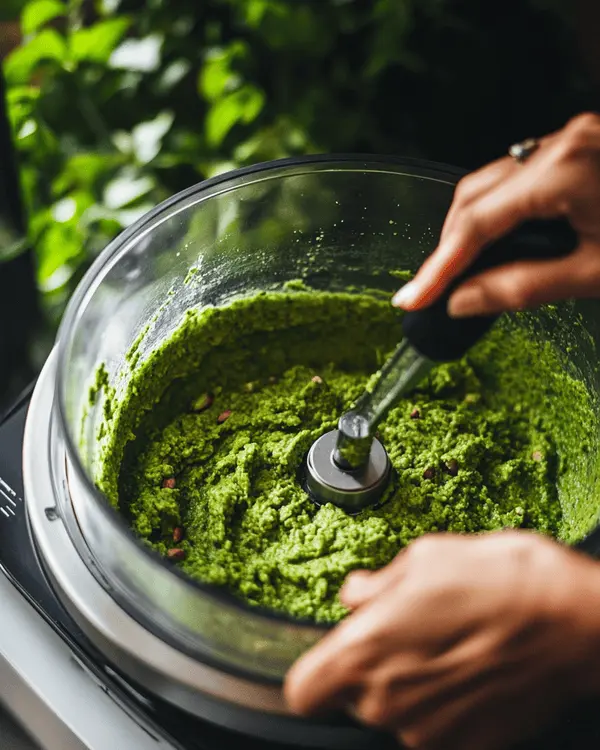
Making Perfect Pistachio Cream
Start with 2 cups (280g) of blanched pistachios, ensuring they’re completely dry. Even minimal moisture (over 3%) will inhibit proper oil release and result in a grainy consistency. I often toast the pistachios lightly at 300°F for 5 minutes to eliminate residual moisture.
Process the nuts for 45 seconds until they become a fine powder. Immediately check the temperature—it should reach between 160–165°F. This heat activates the pistachios’ natural oils and preps them for emulsification.
Add 2 tablespoons of neutral oil (grapeseed is my preferred choice) while the processor is running. Ensure the oil temperature matches the nut temperature to prevent “shocking” the mixture, which can cause separation.
Continue processing for another 60–90 seconds until a smooth paste forms. If needed, gradually incorporate more oil in small increments. Throughout the process, keep the mixture between 160–170°F. This range ensures optimal viscosity and silkiness.
The final cream should coat a spoon without dripping immediately. It should feel light on the tongue but have enough structure to hold shape—this is the hallmark of a well-made pistachio cream.
Creating Homemade Pistachio Butter
Begin with the same preparation method as cream. However, process for only 5-7 minutes total to maintain thicker consistency.
Stop processing when the mixture forms a cohesive paste that holds its shape. Additionally, the temperature should reach 155-160°F—slightly lower than cream. This temperature range preserves more structural integrity while still releasing sufficient oils.
Add minimal oil (1-2 tablespoons maximum) to achieve spreadable consistency. Moreover, too much oil transforms butter into cream, defeating your purpose. Start with one tablespoon and assess consistency before adding more.
Texture testing technique: Lift a spoonful and observe how it falls. Perfect pistachio butter should hold its shape for 2-3 seconds before slowly spreading. If it maintains shape longer, add small amounts of oil gradually.
Color indicators help determine doneness. Properly processed pistachio butter develops rich, vibrant green color. Pale or yellowish results indicate insufficient processing or poor-quality nuts.
Professional Processing Techniques
Jacques Pépin’s patience method emphasizes slow, steady processing over high-speed blending. This approach prevents overheating while developing superior texture gradually.
Alice Waters’ ingredient respect philosophy applies perfectly to nut processing. She advocates understanding each ingredient’s natural properties rather than forcing artificial changes. Pistachios want to release oils slowly—rushing creates inferior results.
Temperature staging involves processing in phases with cooling breaks. Process for 2 minutes, cool for 1 minute, then repeat. This prevents overheating while allowing natural oils to release properly.
Troubleshooting Processing Problems
Problem: Paste won’t smooth out despite extended processing. Solution: Check nut freshness and moisture content. Old or humid nuts resist proper oil release.
Problem: Mixture becomes too hot and seizes up. Solution: Cool completely and restart with shorter processing intervals.
Problem: Final product tastes bitter. Solution: Over-processing or overheating causes bitterness. Start fresh with gentler technique.
Common Mistakes and Expert Fixes
Mistake #1: Adding oil too quickly causes separation and grittiness. Solution: Always add oil in thin streams while processing continuously.
Mistake #2: Processing cold nuts results in powdery, never-smooth texture. Solution: Toast nuts briefly or process until naturally heated through friction.
Honestly, I ruined three batches learning this lesson! Now I always check temperature before adding oil, and my results stay consistently smooth.
Expert Tips for Professional Results
Temperature control makes the difference between amateur and professional results. Therefore, invest in a reliable thermometer and use it consistently.
Julia Child’s technique of gentle heat application applies perfectly here. She always emphasized patience over speed in achieving proper emulsification. Her method of gradual temperature building prevents shocking ingredients and ensures smooth integration.
Thomas Keller’s precision with ingredient temperatures prevents separation issues. Similarly, matching oil and nut temperatures creates seamless blending. His restaurant kitchens maintain strict temperature protocols that home bakers can easily adapt.
Advanced Temperature Management
Seasonal adjustments become necessary as kitchen temperatures fluctuate. Summer processing requires more cooling breaks, while winter may need gentle warming. Additionally, humidity affects processing speed and final texture.
Altitude considerations matter for mountain bakers. Lower air pressure affects heat transfer and processing times. Consequently, high-altitude bakers should extend processing slightly and monitor temperature more carefully.
Batch size scaling requires temperature modifications. Larger batches generate more heat naturally, reducing processing time. Conversely, smaller batches may need extra time to reach optimal temperature ranges.
Professional Flavor Development Techniques
Toasting protocols dramatically impact final flavor profiles. Light toasting (300°F for 5 minutes) removes moisture while preserving delicate flavors. However, darker toasting (350°F for 8 minutes) creates deeper, more complex nutty notes.
Oil selection influences both flavor and performance. Neutral oils like grapeseed preserve pistachio flavor purity. Meanwhile, more flavorful oils like walnut or almond add complexity but risk overwhelming the pistachios.
Salt integration timing affects flavor distribution. Adding salt during initial processing creates better integration than surface seasoning. Furthermore, different salt types contribute varying flavor intensities.
Quality Control Standards
Professional tasting protocols help maintain consistency batch to batch. Taste at multiple processing stages to understand flavor development. Additionally, consistent methodology ensures reproducible results.
Texture benchmarking involves comparing results to commercial products. However, homemade versions often surpass store-bought quality when properly executed.
Shelf-life optimization requires understanding degradation factors. Light, heat, and oxygen exposure accelerate rancidity. Therefore, proper storage protocols extend usable life significantly.
Storage and Make-Ahead Advice
| Storage Method | Pistachio Cream | Pistachio Butter |
|---|---|---|
| Room Temperature | 1 week | 2 weeks |
| Refrigerated | 3 weeks | 6 weeks |
| Frozen | 3 months | 4 months |
Always store in airtight containers to prevent rancidity. Additionally, bring refrigerated versions to room temperature before using for best texture.
Creative Variations and Applications
Regional Variations:
- Sicilian Style: Add orange zest and honey for Mediterranean sophistication
- Persian Inspired: Include cardamom and rose water for exotic elegance
- American Classic: Blend with vanilla and sea salt for familiar comfort
- French Technique: Incorporate lavender and Provence herbs for countryside charm
- Turkish Tradition: Mix with Turkish delight pieces for textural interest
Dietary Modifications:
- Keto-friendly: Increase oil content slightly while maintaining low carb profile
- Vegan: Use plant-based sweeteners only, avoiding honey or dairy derivatives
- Paleo: Omit processed sugars entirely, relying on natural fruit sweeteners
- Gluten-free: Naturally compliant, but verify all add-ins meet requirements
- Sugar-free: Utilize monk fruit or stevia for sweetness without glycemic impact
Seasonal Recipe Adaptations:
Spring celebrations benefit from floral additions like elderflower or violet. Easter recipes incorporate pastel food coloring for festive presentation. Additionally, fresh mint creates refreshing spring dessert applications.
Summer indulgences work beautifully with citrus zest combinations. Lemon-pistachio cream transforms ordinary pound cake into elegant entertainment desserts. Meanwhile, lime variations create tropical fusion desserts perfect for outdoor gatherings.
Fall harvest themes pair excellently with warm spices like cinnamon and nutmeg. Pumpkin spice pistachio butter creates unique autumn spreads. Furthermore, apple cider reduction additions provide seasonal complexity.
Winter holiday versions incorporate traditional spices like cardamom and cloves. Christmas cookie applications benefit from peppermint extract additions. Moreover, eggnog-inspired variations use nutmeg and bourbon extracts.
Commercial Application Considerations
Scaling for business requires understanding cost calculations and shelf-life limitations. Commercial kitchens need consistent results regardless of ambient conditions. Therefore, standardized procedures become essential for success.
Food safety protocols involve proper temperature control and sanitation procedures. Additionally, commercial production requires understanding pH levels and water activity for shelf stability.
Packaging considerations affect both presentation and preservation. Vacuum sealing extends shelf life while maintaining quality. However, attractive packaging influences consumer purchasing decisions significantly.
Perfect Pairings and Serving Ideas

Pistachio cream transforms ordinary desserts into gourmet experiences. For instance, swirl it into cheesecake batter or layer between cake rounds. The silky texture creates professional-looking dessert presentations with minimal effort.
Classic dessert applications include macaroon fillings, tart components, and ice cream bases. Additionally, pistachio cream works beautifully in Italian gelato recipes, providing authentic texture and flavor.
Modern fusion possibilities combine pistachio with unexpected flavors like matcha or black sesame. These combinations appeal to adventurous dessert enthusiasts while maintaining familiar comfort.
Meanwhile, pistachio butter excels as a spread for morning pastries or filling for thumbprint cookies. Check out our pistachio butter recipes for more inspiration.
Breakfast applications extend beyond simple toast spreading. Pancake and waffle batters benefit from pistachio butter additions. Furthermore, overnight oat recipes gain richness and protein from nut butter incorporation.
Savory applications surprise many home cooks. Middle Eastern cuisine frequently combines pistachios with meat dishes. Additionally, salad dressings benefit from pistachio cream’s richness and complexity.
Consider pairing either version with complementary flavors like dark chocolate, vanilla, or citrus. Additionally, both work beautifully in traditional pistachio butter applications and modern fusion desserts.
Wine pairing suggestions enhance dessert course presentations. Sweet Rieslings complement pistachio’s natural sweetness. Meanwhile, port wines create sophisticated flavor bridges with chocolate-pistachio combinations.
Coffee and tea pairings offer afternoon treat possibilities. Turkish coffee enhances Middle Eastern pistachio preparations. Additionally, Earl Grey tea provides citrus notes that brighten rich nut flavors.
Frequently Asked Questions
What’s the main difference between pistachio cream vs pistachio butter?
The primary difference lies in consistency and oil content. Pistachio cream contains more oil (35-40%) creating a pourable texture, while pistachio butter maintains spreadable thickness with less oil (25-30%). Processing time also differs, with cream requiring longer blending.
Can I make pistachio butter without added oil?
Yes, but results vary based on pistachio quality and freshness. Fresh, high-oil pistachios release enough natural oils during processing. However, adding minimal oil (1 tablespoon) ensures consistent results and prevents processor strain.
How long does homemade pistachio cream last?
Homemade pistachio cream stays fresh for 1 week at room temperature or 3 weeks refrigerated in airtight containers. Signs of spoilage include rancid odor, mold growth, or separated oils that won’t re-emulsify when stirred.
Why did my pistachio mixture turn grainy instead of smooth?
Grainy texture typically results from moisture in the nuts, insufficient processing time, or temperature issues. Ensure pistachios are completely dry, process until heated (160°F), and add oil gradually while machine runs continuously.
Can I substitute pistachio cream for pistachio butter in recipes?
Substitution depends on the recipe’s requirements. Use pistachio cream in frostings, sauces, and batters where smooth incorporation matters. However, use pistachio butter for spreads, fillings, and applications requiring structure. Adjust liquid ingredients accordingly when substituting.
Transform Your Baking Today
Understanding pistachio cream vs butter opens endless possibilities in your kitchen. Whether you choose the silky elegance of cream or the robust character of butter, both ingredients elevate ordinary recipes into extraordinary experiences.
Remember, the key lies in temperature control, quality ingredients, and patience during processing. Don’t rush the process—let the natural oils work their magic slowly.
Try your hand at homemade pistachio butter this weekend, and discover why fresh always beats store-bought. Your taste buds will thank you, and your family will beg for the recipe.
Pair your creation with warm brioche for breakfast or swirl into vanilla ice cream for an elegant dessert. The possibilities are as limitless as your imagination.
Have you tried making either version at home? Share your results and tag us on social media—I love seeing your creative interpretations come to life!
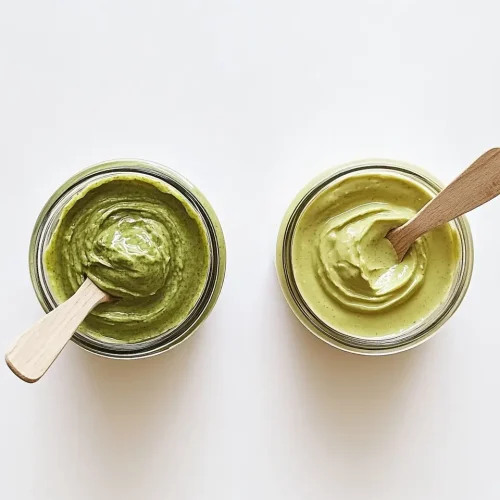
Homemade Pistachio Cream and Butter
Equipment
- – Food processor (minimum 7-cup capacity, 600+ watts)
- – Digital thermometer (optional but recommended)
- – Fine-mesh sieve or tamis (optional for ultra-smooth cream)
- – Airtight storage containers (glass or food-grade plastic)
Ingredients
- – 2 cups blanched pistachios must be completely dry
- – 3–4 tbsp neutral oil such as grapeseed (for cream)
- – 1–2 tbsp neutral oil for butter variation
- – ¼ tsp salt enhances flavor and emulsion stability
- – 1–2 tbsp powdered sugar optional for sweetness (use 1 tbsp for butter)
Instructions
- – Add blanched, dry pistachios to a food processor.
- – Pulse until broken into fine crumbs.
- – For pistachio butter, continue processing 5–7 minutes until thick and spreadable.
- – For pistachio cream, slowly drizzle in oil while processing an
Notes
- Use grapeseed oil for a neutral flavor that doesn’t overpower pistachio notes.
- Cold oil may lead to grainy texture; room temperature oil integrates best.
- For flavor variations, add vanilla bean paste, rose water, or melted white chocolate.
- Store up to 3 weeks for cream and 6 weeks for butter in the fridge.
- Freeze for up to 12 months in airtight, freezer-safe containers.





